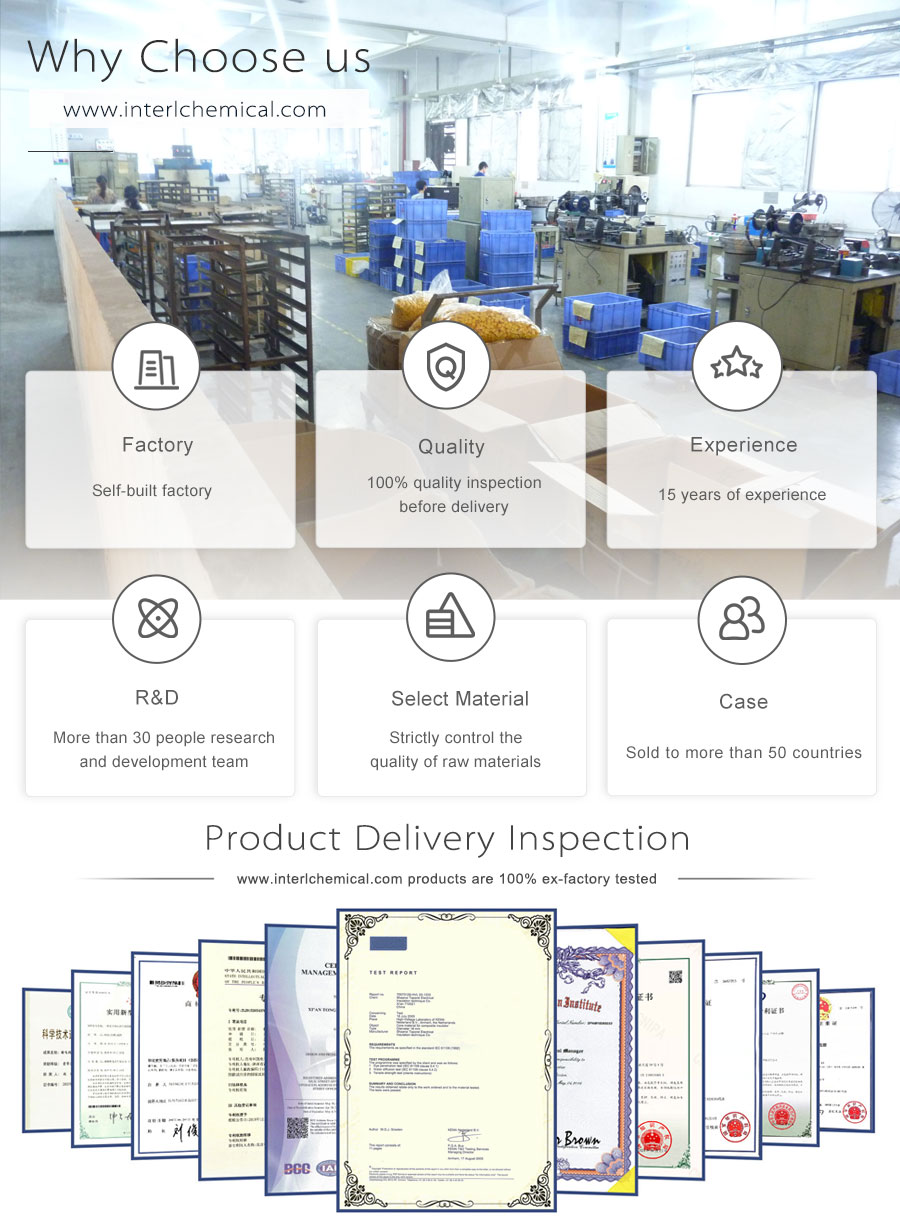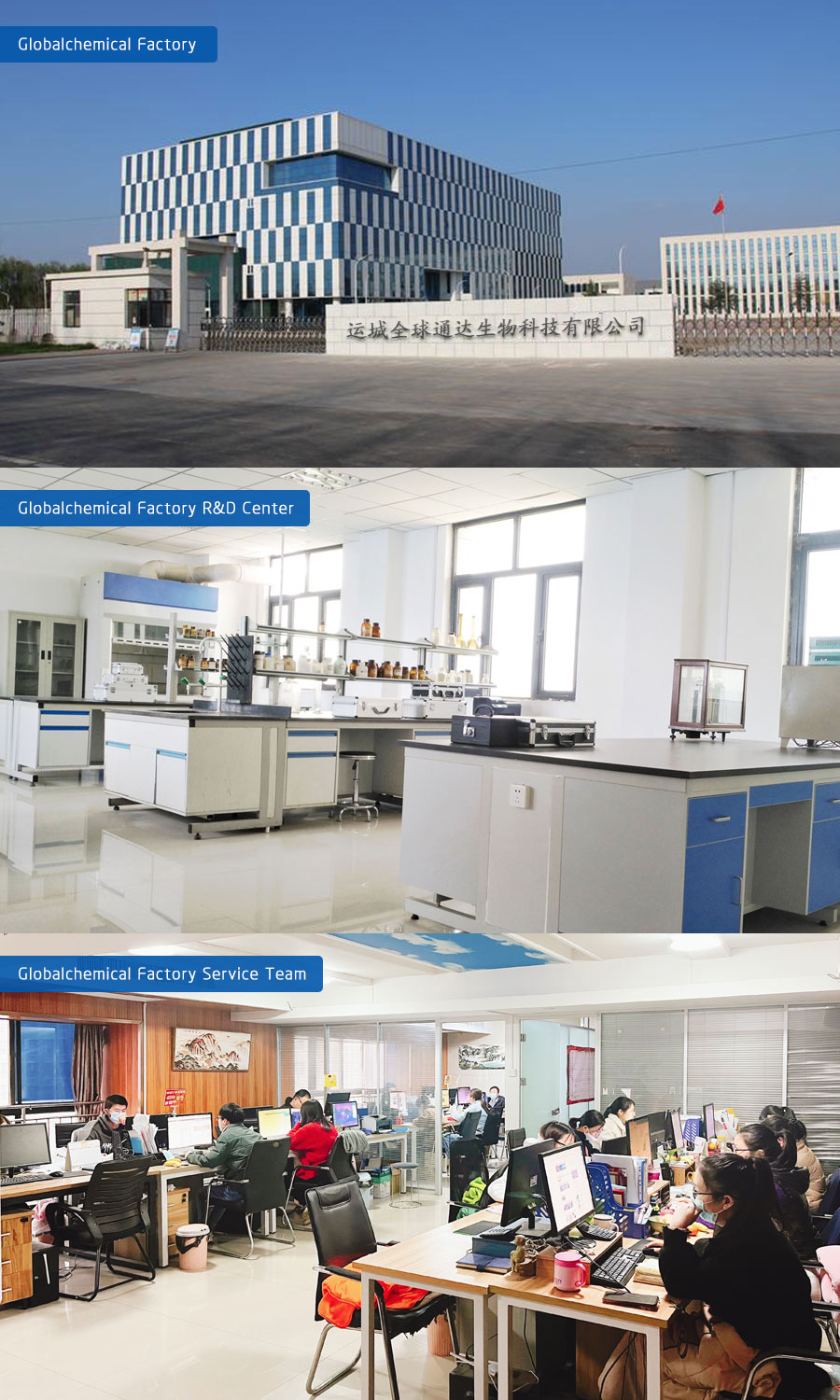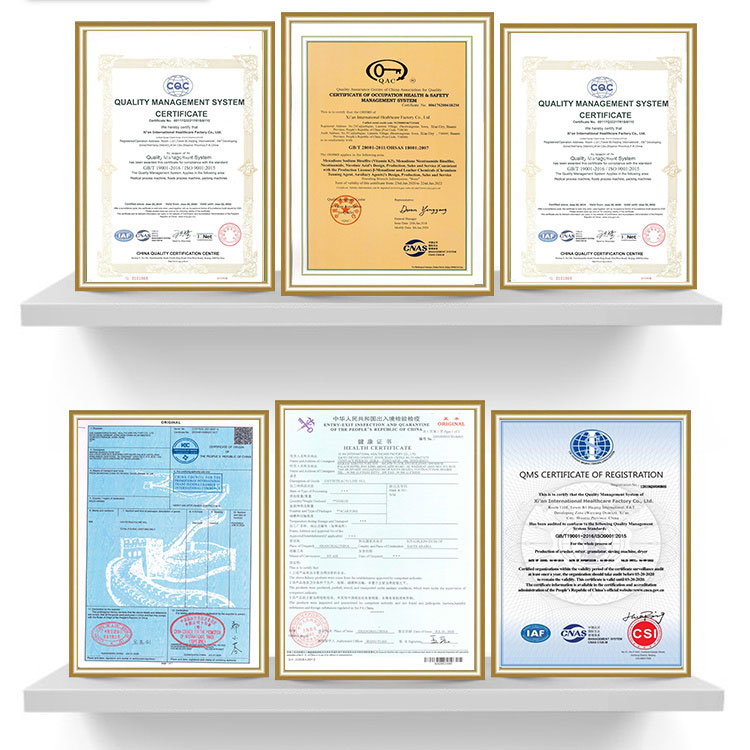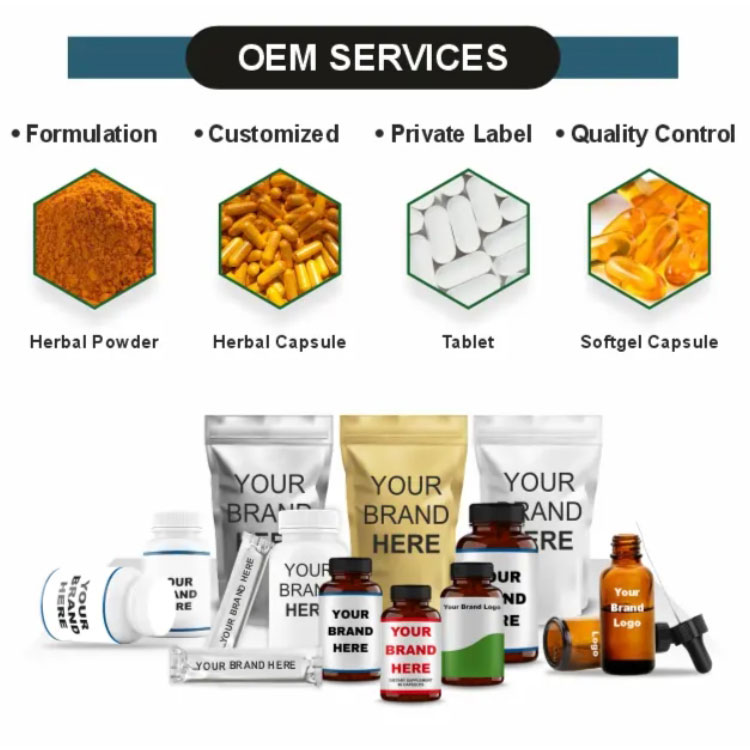Phone: 86-29-89601602
Mail: sales27@interlgroup.com
Add: Room 305 , 3/F , Haipai Decoration Office Building , Yudu Avenue , Yuncheng , Shanxi
Food Grade Taurinetaurinetaurine Taurine Price Powder CAS 107-35-7
Product Overview:
Taurine is a sulfur-containing non-protein amino acid with a chemical name of 2-aminoethanesulfonic acid (NH₂CH₂CH₂SO₃H). It was first isolated from cow bile in 1827. Nervous system: Promotes brain tissue development and nerve cell differentiation in infants and young children. Cardiovascular health: Regulates myocardial contractility and protects heart function. Vision and immunity: Rich in retina, maintains visual function; enhances immune cell activity. Energy metabolism: Common ingredient in functional drinks, relieves fatigue and improves exercise endurance.
Food Grade Taurinetaurinetaurine Taurine Price Powder CAS 107-35-7 Attributes
Taurinetaurinetaurine powder
CAS:107-35-7
MF:C2H7NO3S
MW:125.15
EINECS:203-483-8
Specification: 99% min Taurinetaurinetaurine powder
Sample:Taurinetaurinetaurine powder
Packaging:1kg/bag, 25kg/drum
Brand:Ausreson
Appearance:white powder
Shelf Life: 2 Years
Test Method: HPLC
Food Grade Taurinetaurinetaurine Taurine Price Powder CAS 107-35-7 Details
| Product Name | Food Additive Taurine Powder CAS 107-35-7 Taurinetaurinetaurine Food Grade 99% Taurine Powder |
| Appearance | White Powder |
| CAS | 107-35-7t |
| Molecular Formula | C2H7NO3S |
| Purity | 99% |
| Keywords | taurine food grade;80% taurine powder;supplement taurine |
| Storage | Keep in a cool, dry, dark location in a tightly sealed container or cylinder. |
| Shelf Life | 24 Months |
Uses of Taurinetaurinetaurine
1. Health and medical uses
Cardiovascular protection: regulate blood pressure, stabilize heart rate, and reduce the risk of arteriosclerosis Neurodevelopment: promote the growth of brain tissue and differentiation of nerve cells in infants and young children, and improve cognitive function Vision maintenance: protect retinal cells, relieve eye fatigue and delay vision loss Immunomodulation: enhance T cell activity and assist anti-tumor immunotherapy Anti-aging: extend the life of experimental animals, improve osteoporosis and muscle attenuation
2. Exercise and energy supplement Functional drinks:
relieve fatigue, improve exercise endurance and recovery speed Muscle repair: reduce muscle damage after exercise and accelerate the removal of metabolic waste
3. Food industry applications Nutrient enhancer:
added to dairy products, beverages, and infant formula Natural sources: seafood, meat and eggs are rich in taurine and are important dietary supplements
4. Potential risk warning Leukemia association:
The latest research found that taurine may drive the progression of leukemia by promoting glycolysis, so high-dose supplementation should be vigilant.
Specification of Taurine
| Product Name: | Taurine | Molecular Formula: | C2H7NO3S |
| CAS: | 107-35-7 | Grade: | Food Grade |
| nalysis | Specification |
| Appearance | White crystalline powder |
| Taurine | 98.5%-101.50% |
| Electrical conductivity | ≤150 |
| PH | 4.1-5.6 |
| Easily carbonizable substances | Pass to experiment |
| Residue on ignition | ≤0.1% |
| Loss on drying | ≤0.2% |
| As | |
| Clarity and color of sulution | Pass to experiment |
| Chloride | ≤0.02% |
| Sulfate | ≤0.02% |
What are the applications of taurine?
1. Medical field
Cardiovascular drugs: used to regulate blood pressure, enhance myocardial function, and reduce the risk of atherosclerosis
Nervous system drugs: promote brain development in infants and young children, improve cognitive function and nerve conduction
Ophthalmic drugs: protect retinal cells and prevent eye diseases such as glaucoma and cataracts
Metabolic regulation: assist in improving insulin resistance and lipid metabolism, and is used for diabetes management
2. Food and beverages
Functional beverages: as the core ingredient for anti-fatigue, accounting for 45% of the global taurine application
Nutritional enhancers: added to infant formula, sports food and dairy products
Antioxidants: used to delay food oxidation and maintain quality
3. Feed and pet food
Aquatic feed: enhance immunity and replace antibiotics
Pet food (especially cat food): necessary ingredients, lack of which can cause pet vision and heart problems
4. Industrial use
Fluorescent brighteners: used in textiles, papermaking and other fields
pH buffers: regulate acid-base balance in chemical production
Pharmacological effects of Taurinetaurinetaurine
1. Cell protection and anti-oxidation
Stabilize cell membranes: Protect nerves, retina and myocardial cells from free radical damage by regulating osmotic pressure and inhibiting lipid peroxidation
Scavenging reactive oxygen species: Enhance superoxide dismutase (SOD) activity and neutralize oxidative stress products such as hydroxyl free radicals
2. Nervous system regulation
Promote neurodevelopment: Stimulate the proliferation and differentiation of infant brain cells, improve learning and memory abilities, and premature infants need additional supplements
Neurotransmitter regulation: Activate GABA receptors, regulate calcium ion channels, relieve anxiety and improve sleep quality
3. Cardiovascular system protection
Enhance myocardial function: Stabilize myocardial cell membrane potential, reduce arrhythmias, and improve heart failure
Metabolic regulation: Lower blood pressure and cholesterol, and inhibit the formation of atherosclerosis
4. Metabolism and digestion assistance
Bile acid binding: Form taurocholic acid to promote fat digestion and reduce the risk of gallstones
Sugar metabolism intervention: Improve insulin resistance and reduce diabetic complications
5. Exercise and fatigue recovery
Muscle repair: Regulate calcium ion concentration to reduce muscle fiber damage after exercise Anti-fatigue: Inhibit lactic acid accumulation, accelerate energy metabolism and blood sugar stability
6. Potential risk tips
Leukemia association: The latest research found that taurine may promote the proliferation of leukemia stem cells through TAUT receptors, so be careful about high-dose supplementation
Production method of taurinetaurinetaurine
1. Natural extraction method
Raw material source: Extracted from the viscera or muscles of marine organisms such as cow bile, squid, octopus, etc.
Process steps:
Hot water extraction: Treat the raw material with hot water to dissolve taurine
Purification and refining: Through decolorization, deodorization, degreasing and ion exchange resin separation, concentration and alcohol crystallization
Features: Complex process and low yield (about 66%-67%), suitable for small-scale production
2. Chemical synthesis method
Mainstream process:
Sulfuric acid method: Using ethanolamine and sulfuric acid as raw materials, synthesized through sulfonation, neutralization and other steps, it has the characteristics of water saving and high yield
Thiazolidine derivative oxidation method: Using 1,3-thiazolidine-2-thione as raw material, taurine or taurine replacement is obtained through oxidation reaction
Advantages: Suitable for industrial large-scale production, low cost
3. Other methods
Extraction from sodium sulfate: There is a technical route but it is less used











